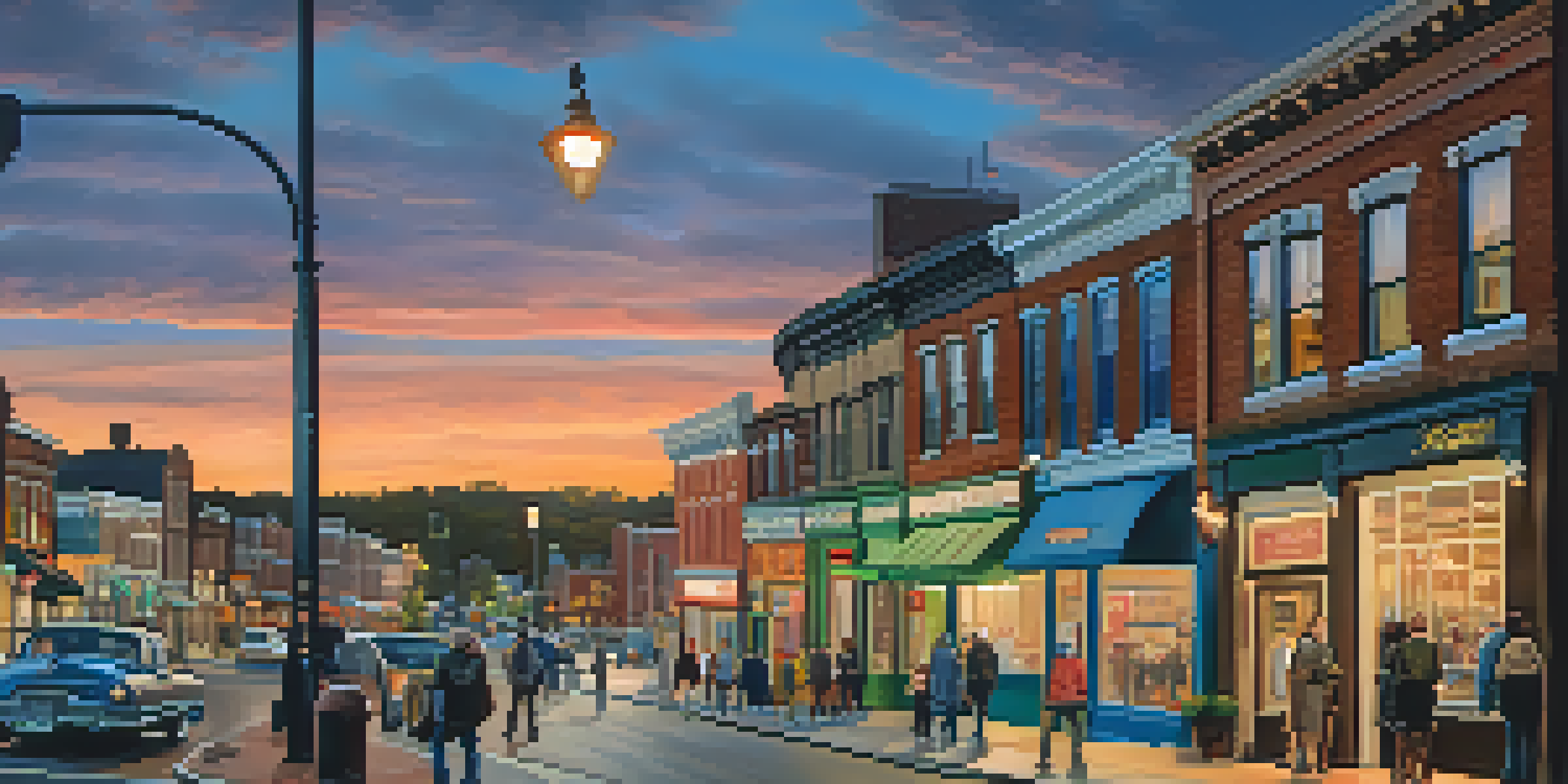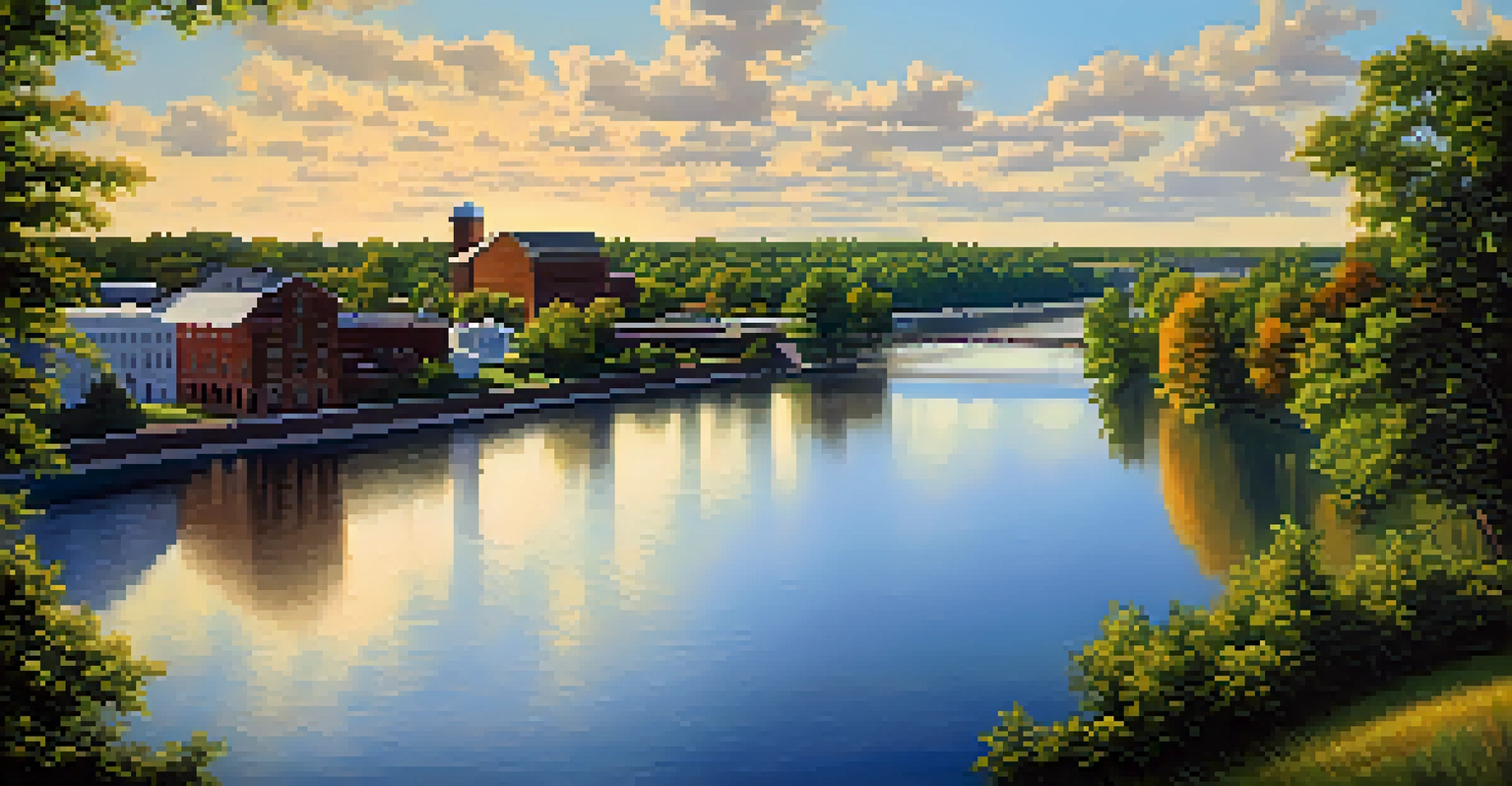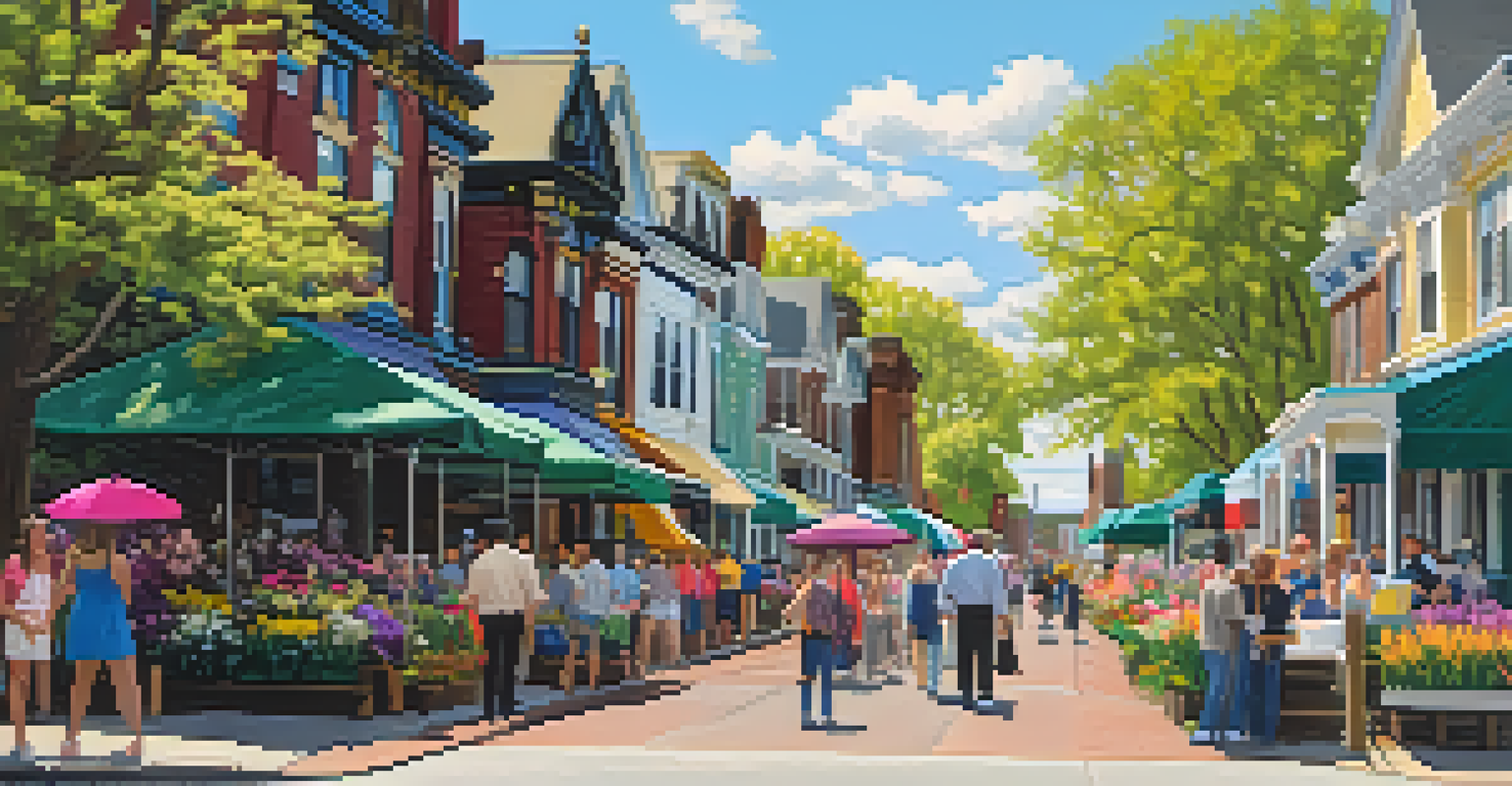Rochester's Notable Neighborhoods: A Historical Overview

The Origins of Rochester: A Brief Historical Context
Rochester, New York, was founded in the early 19th century, initially growing around flour mills and the Genesee River. This strategic location fueled its development as a hub for commerce and industry. The city quickly earned a reputation for its thriving economy, attracting settlers from various backgrounds.
Rochester is a city that has always embraced change while valuing its rich history.
The Erie Canal, completed in 1825, played a pivotal role in Rochester's growth, connecting it to larger markets and facilitating trade. This transportation project transformed the city into a bustling center for agriculture and manufacturing. As a result, Rochester began to flourish, drawing in a diverse population eager for new opportunities.
By the mid-1800s, Rochester was not just a mill town; it became a center for innovation and education. With the establishment of several colleges and institutions, the city laid the groundwork for a vibrant community that valued progress and learning.
The Flour City: Development of the Corn Hill Neighborhood
Corn Hill, one of Rochester's oldest neighborhoods, emerged in the early 1800s, primarily inhabited by flour mill workers and their families. Its name pays homage to the corn that was transported via the canal, symbolizing the agricultural roots of the area. The neighborhood quickly became a melting pot of cultures, with immigrants contributing to its rich tapestry.

As Rochester evolved, so did Corn Hill. The area saw the construction of beautiful Victorian homes and cultural institutions, making it a desirable place to live. Today, it’s known for its vibrant arts scene and annual festivals, celebrating the neighborhood’s historic charm and community spirit.
Rochester's Rich Historical Roots
Founded in the early 19th century, Rochester grew rapidly due to its strategic location along the Genesee River and the Erie Canal, fostering commerce and innovation.
Corn Hill is also home to the renowned Corn Hill Arts Festival, which showcases local artists and fosters community engagement. This celebration not only highlights the neighborhood's artistic flair but also reflects Rochester's appreciation for history and culture.
The Flourishing of Rochester's South Wedge Neighborhood
South Wedge began to take shape in the late 19th century as a working-class neighborhood, characterized by its industrial roots and close-knit community. The area was initially home to many factories and warehouses, providing employment for residents. Over the years, it became a vibrant hub for artists, students, and young professionals seeking affordable housing.
Community is the foundation of our shared future, and together we can build vibrant neighborhoods.
The transformation of South Wedge is evident in its eclectic mix of architecture, from historic homes to modern lofts. This neighborhood is often cited as a prime example of urban revitalization, where old buildings are repurposed to meet contemporary needs. The influx of creative energy has fostered a lively atmosphere that attracts visitors and new residents alike.
Today, South Wedge boasts a variety of local shops, eateries, and cultural events, making it a vibrant focal point within Rochester. Its commitment to community engagement and sustainability reflects a modern ethos while honoring its historical roots.
The Historic Charm of Rochester's Neighborhood of Charlotte
Nestled along the shores of Lake Ontario, Charlotte has a unique history as a resort community that dates back to the late 1800s. Originally developed as a summer getaway for city dwellers, its picturesque waterfront and sandy beaches drew families seeking leisure and relaxation. Today, Charlotte embodies a blend of historical charm and modern amenities.
The iconic Charlotte Pier and the nearby Ontario Beach Park are reminders of its past as a popular tourist destination. These locations not only provide recreational opportunities but also serve as gathering spots for community events. The neighborhood's vibrant atmosphere is further enriched by its local restaurants and shops, many of which celebrate the area’s maritime heritage.
Diverse Neighborhoods Reflect Culture
Rochester's neighborhoods, such as Corn Hill and the 19th Ward, showcase a vibrant cultural mosaic enriched by diverse communities and historical significance.
Charlotte has undergone significant development in recent years, with a focus on revitalizing its historic sites while enhancing community spaces. The balance of preserving history and fostering growth makes Charlotte a unique and inviting neighborhood within Rochester.
Exploring the Historic District: Rochester's Neighborhood of Corn Hill
The Corn Hill Historic District stands as a testament to Rochester's architectural heritage, showcasing stunning homes built in the mid-19th century. This area is recognized for its well-preserved structures that reflect various architectural styles, including Italianate and Gothic Revival. Walking through the district feels like stepping back in time, with each home telling a story of the city's past.
Corn Hill is not only about stunning architecture; it also has a rich cultural history. Many of its original residents were prominent figures in Rochester's development, contributing to industries such as manufacturing and education. Today, the neighborhood continues to honor its legacy through community events and preservation efforts.
Visitors to Corn Hill can enjoy guided tours that highlight both the history and architecture of the district. These tours provide a deeper understanding of the neighborhood's significance and foster appreciation for the careful preservation of Rochester's historical treasures.
Rochester's Neighborhood of the 19th Ward: A Cultural Mosaic
The 19th Ward is known for its diverse population, which has contributed to a rich cultural mosaic. Established in the late 1800s, this neighborhood became home to many immigrant families, each bringing their unique traditions and customs. Today, the 19th Ward is celebrated for its inclusive atmosphere and community engagement.
Community organizations and local leaders work tirelessly to promote cultural events, festivals, and activities that reflect the neighborhood's vibrant heritage. This commitment to diversity fosters a strong sense of belonging, making the 19th Ward a welcoming place for new residents and visitors alike.
Collaborative Future for Neighborhoods
The future of Rochester's neighborhoods hinges on community engagement and collaboration to balance growth with the preservation of their unique identities.
The neighborhood also features various parks and recreational facilities, further enhancing the community experience. Families and individuals can enjoy outdoor activities while participating in local events that celebrate the rich cultural heritage of the 19th Ward.
The Evolution of Rochester's Neighborhood: East End
The East End, once the heart of Rochester’s nightlife and entertainment scene, has evolved significantly over the decades. In the late 20th century, this area underwent a revitalization, transforming from a declining neighborhood into a thriving cultural hub. Today, the East End is known for its eclectic mix of shops, restaurants, and art galleries.
The neighborhood attracts a diverse crowd, from young professionals to families, all drawn by its vibrant atmosphere. Various annual events, such as the East End Festival, highlight local talent and foster community spirit. This sense of camaraderie is palpable, making the East End a desirable destination for both residents and visitors.

As the city continues to grow, the East End remains a focal point for Rochester’s cultural scene, blending history with modernity. Its ability to adapt while retaining its unique character is a testament to the resilience of Rochester's neighborhoods.
The Future of Rochester's Neighborhoods: A Collaborative Vision
Looking ahead, the future of Rochester's neighborhoods lies in collaboration and community engagement. Local leaders, residents, and organizations are working together to address challenges and foster growth while preserving the unique character of each area. This collaborative approach ensures that all voices are heard in the planning process.
Initiatives aimed at enhancing public spaces, improving infrastructure, and promoting sustainability are key components of this vision. By prioritizing community needs and aspirations, Rochester can create neighborhoods that are not only livable but also vibrant and inclusive. This holistic approach will help retain the rich history while embracing the future.
As Rochester continues to evolve, its neighborhoods will play a crucial role in shaping the city's identity. With a focus on collaboration and shared values, the future looks bright for the residents and communities that call Rochester home.